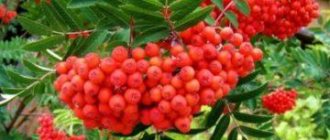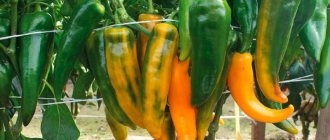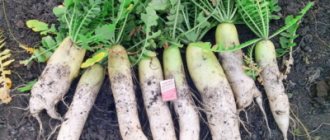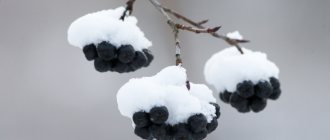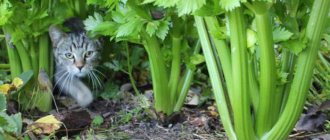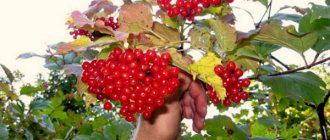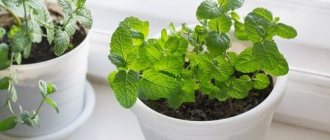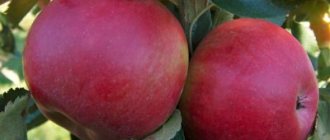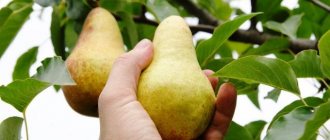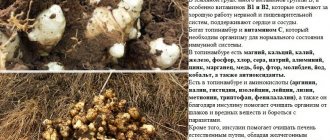Chokeberry or chokeberry is known for its delicious berries, which are great for making homemade liqueurs and wines, compotes and jams. But the fruits of the bush are also used for medicinal purposes, for the prevention and treatment of many diseases. To get the maximum healing effect, prepare a delicious, healthy drink or dessert, it is important to know how and when to collect chokeberries.
When does chokeberry ripen?
The wild ancestor of cultivated varieties of chokeberry is inedible. This is a tart, astringent berry. Cultivated varieties have partially retained the properties of the wild species.
Wild chokeberry is a winter-hardy plant. This quality was noticed by I.V. Michurin, who recommended the fruit shrub for northern fruit growing. Cultivated varieties of chokeberry are now grown in all regions, even in fairly cold regions. But due to the climate, the ripening time of chokeberry varies, although the fruits of this plant have time to ripen even in places where winter comes early.
When to harvest chokeberry
Due to its winter hardiness and similar appearance to the common mountain ash, there is a misconception that the chokeberry becomes sweet only after it has been frozen. In reality this is not the case. It’s just that in many regions where this crop grows, frosts come at the same time that the crop finally ripens. But in the southern regions, chokeberries ripen well even without frost.
Chokeberry ripens starting in August. At this time, the fruits already acquire a black color and are relatively easily separated from the stalks. But the taste of the fruits of a cultivated plant is no different from wild ones.
From September, the amount of astringents begins to decrease, and chokeberry acquires a sweet taste. At this time, chokeberry can be collected for making liqueurs, long-term fresh storage and adding to compotes. For the latter, only a few berries are used, which will add color and an original flavor to the main ingredients of the preservation: apples and pears.
Important! Black mulberry is also sometimes used for this purpose.
For food, preserves, juices, jams and making wine, you need to pick chokeberry berries from mid-October, when chokeberry is fully ripened. This chokeberry cannot be stored, but it can be dried or frozen. Frozen fruit usually becomes more sour after defrosting, so earlier harvested chokeberries are not suitable for the freezer.
When to collect chokeberry in the Moscow region
The Moscow region is one of the most favorable regions for growing chokeberries. All recommendations for harvesting are based on this region and the rest of the Central Belt of Russia. Therefore, it is necessary to collect chokeberry in the Moscow region without deviating from the recommended time frame.
Important! In order to understand whether the chokeberry is ripe, just pick a couple of pieces and taste them.
Since chokeberry is used for different purposes, it must be collected at the most suitable stage of maturity.
When to collect chokeberry in the middle zone
In central Russia, chokeberry ripens, as in the Moscow region. From a climatic point of view, these are the same region. The only difference is that on the southern border of the Middle Zone, chokeberries can be harvested before the onset of frost, but on the northern border frosts may come a little earlier and the crop will have to be removed from under the snow. Such freezing will have a bad effect on the further storage of chokeberry.
Therefore, if you plan to store berries in their “natural” form, it is better to harvest before frost. If your plans include making jam or rubbing with sugar, then you don’t have to rush to collect it.
Harvest dates for chokeberry in other regions
Before October, chokeberries ripen only in the southern regions, where the growing season begins earlier. In the northern regions, in the Urals, Siberia or the Leningrad region, the growing season begins relatively later. Weather permitting, chokeberries will ripen by mid to late October. If the cold weather arrives earlier, you will have to collect frozen, unripe chokeberries. More precisely, the fruits of technical ripeness.
Ripening period and collection rules
Chokeberry is a recognized medicinal product in folk and traditional medicine.
Chokeberry or chokeberry is not only an ornamental shrub in our gardens and plots. Closer to autumn, the harvest of berries begins to ripen, which, if not removed, can remain on the branches until spring. This is where the question arises: at what time are the berries considered ripe, and at what time should they be picked?
Exact recommendations for harvesting times depend on the purpose of the collected berries and the purposes for their use. Chokeberry does not have a delightful aroma or appetizing taste, but this berry is very healthy and even medicinal. It is effectively used in cooking in the preparation of desserts and baked goods, added to sauces, and included in fruit juices and jams. The slightly tart taste of rowan fruits adds refined notes to many dishes and drinks. In addition, chokeberry is a recognized medicinal product in folk and traditional medicine. It has anti-inflammatory, choleretic and diuretic effects, reduces allergic symptoms, and helps with high blood pressure. Its use helps remove radionuclides and heavy metals from the body. And in order to take full advantage of these taste and medicinal properties, you need to harvest the crop on time and use it correctly.
Advice! To collect berries, use only enamel, glass or plastic containers, since containers made of galvanized steel or aluminum negatively affect the taste of the fruit.
Aronia is harvested in the following way: using pruning shears or scissors, the umbrella inflorescences are cut off as a whole branch, and then, if necessary, the berries are separated from the stalks (you don’t have to sort them out if the raw materials are being prepared for wine). This method of harvesting is much more productive than if you remove each berry separately. In addition, a tree freed from brushes recovers faster, and berries missed during normal harvesting and left for the winter can become a breeding ground for infections in the spring. The harvested crop must be immediately processed in order to preserve maximum nutrients.
The harvested crop must be immediately processed
Rules for collecting chokeberry
When harvesting, you need to take into account not only your interests, but also the needs of the plant. Many people prefer to pick only the berries so as not to carry trash home. In addition, the stalks and small branches take up a lot of space. But the bush recovers better if you cut off the entire bunches along with the stalks and small branches on which the bunches grew.
You can harvest chokeberries of technical ripeness from mid-August. At this time, the chokeberry acquires color, but still has a tart, astringent taste. Chokeberry collected at this time can be stored fresh for a long time. Usually the fruits of technical ripeness are collected for sale. Can be used for high-strength liqueurs, in which alcohol “turns off” taste buds and the manufacturer only cares about color. But it’s better to wait until September to collect.
In September, the fruits of chokeberry acquire not only color, but also a sweet and sour taste. At this time, the chokeberry is still hard to the touch. This is the maximum level of ripeness that can be purchased on the market. Various tricks “boil a little before harvesting” relate specifically to this level of chokeberry ripeness. Fruits of “medium level” of ripeness can also be stored fresh for a long time and are suitable for liqueurs with a small percentage of alcohol. The same level is suitable for adding a small amount of berries to canned fruit.
Important! Some gardeners for liqueurs advise to be sure to pick berries only with stalks.
“Mono-processing” is possible after the chokeberry reaches full ripeness. This happens by mid-October. The chokeberry completely gains sugar and becomes soft. To avoid damaging the berries, they must be cut off along with the stalks. Remove excess parts immediately before processing.
Ripe chokeberry can be used to make:
- jam;
- jam;
- juice;
- guilt;
- dried fruits;
- compotes
You can make compotes from ripe fruits without adding other fruits. Ripe chokeberries are also frozen.
Preparing vitamin tea or decoction
Red and black rowan have a high level of useful components that have a beneficial effect on human health.
This berry helps eliminate various diseases of the digestive system, liver, kidneys, and normalizes the activity of the heart and blood vessels.
This berry can be added to various tinctures, decoctions, and fortified tea. In this case, you can use both fresh and dried fruits for cooking . The main thing when preparing is to take into account all the recipe recommendations.
Vitaminized black or red berry tea
Fortified tea based on red or black rowan is considered an effective remedy against influenza and ARVI . This drink is useful to drink in the spring, when there is a lack of vitamins and beneficial components.
Interesting: How to properly store onions in an apartment
For preparation you will need about 50 grams of rowan and 50 grams of hawthorn berries, a liter of hot water .
Vitamin tea made from red or black rowan will be an effective remedy against influenza and ARVI
Tea preparation scheme:
- To begin, prepare 50 grams of rowan and rose hips.
- If you have a thermos, then you should put rowan berries and rose hips into it.
- Pour in 1 liter of hot water.
- Close the thermos and leave to infuse for 6-8 hours.
You should drink half a glass of prepared tea 2-3 times a day . To improve the taste and tonic properties, you can add a little natural honey and a spoonful of grated ginger root to the finished drink.
Tea with currants and rowan
A drink with the addition of currants turns out to be very tasty, invigorating and tonic. You can drink it during periods of epidemics of colds.
It improves the properties of the immune system , strengthens the body's resistance to the effects of various infectious and colds.
To prepare a healthy drink you will need 50 grams of red or black rowan, 1 large spoon of currants, 1 large spoon of dried currant leaves .
Tea with currants and rowan improves the properties of the immune system, strengthens the body's resistance
- Prepare the berries and leaves.
- Place rowan, berries and currant leaves in a thermos.
- Everything is filled with a liter of hot water.
- Be sure to close the thermos tightly.
- We leave everything to brew overnight.
- You can drink tea every day, half a glass 3 times.
It is worth noting that fortified rowan tea improves the functioning of the liver, kidneys, heart, and blood vessels . In addition, it normalizes the activity of the digestive system.
Flower decoction
Rowan flowers have beneficial properties . They should be collected in late May early June. Decoctions of rowan flowers help normalize the activity of the endocrine system, eliminate liver disorders, and help with hemorrhoids, coughs, and various gynecological pathologies.
For preparation you will need about 1 large spoon of rowan flowers, 250 ml of hot water .
Decoctions of rowan flowers help normalize the activity of the endocrine system and eliminate liver disorders
Everything is prepared according to the following scheme:
- First, prepare 1 large spoon of rowan flowers.
- Place the flowers in a jar.
- Fill everything with hot water, one glass is enough.
- Everything is infused for 30 minutes.
- After this, the broth is filtered through gauze material.
You should drink half a glass of the decoction three times a day . You can infuse the flock in a thermos for 3-4 hours. It is recommended to drink ¼ glass three times a day.
Decoctions based on rowan flowers can be added to medicinal baths to treat joint pain. Decoctions are used for various colds - they are often used to gargle for pharyngitis and laryngitis.
The first stage is suitable for collecting fruits that will be used for drying. The second stage is suitable for preparing various preparations, preserves, compotes, jams.
In any case, whenever this berry is collected, it has beneficial properties that have a beneficial effect on the functioning of the body’s organs, on general condition and health.
You should drink half a glass of prepared tea 2-3 times a day . To improve the taste and tonic properties, you can add a little natural honey and a spoonful of grated ginger root to the finished drink.
Harvest processing
Chokeberry of technical ripeness is not particularly processed. It can be dried, frozen, or preserved in alcohol. But it can also be stored fresh for quite a long time.
Fully ripened fruits must be processed as soon as possible. The soft chokeberry, when damaged, releases juice, which begins to sour. The ripe crop is processed within 1-2 days. The latter is possible if stored in the refrigerator. If you don’t want to bother with jam or juices, chokeberry can be frozen at a temperature of -18 °C.
It must be taken into account that after defrosting, the fruits must be consumed immediately, since the laws of physics also apply to chokeberry. Frozen water damages fruit cells. When defrosted, the chokeberry “deflates” and releases juice.
A good storage method that does not require electricity is drying. Dried fruits can be stored at room temperature. Otherwise, the methods for processing chokeberry are the same as for other fruits.
Attention! Aronia collected after frost is only suitable for deep processing and in the shortest possible time.
After cold weather, the fruits are damaged by frost and can only be used for jam or juice.
